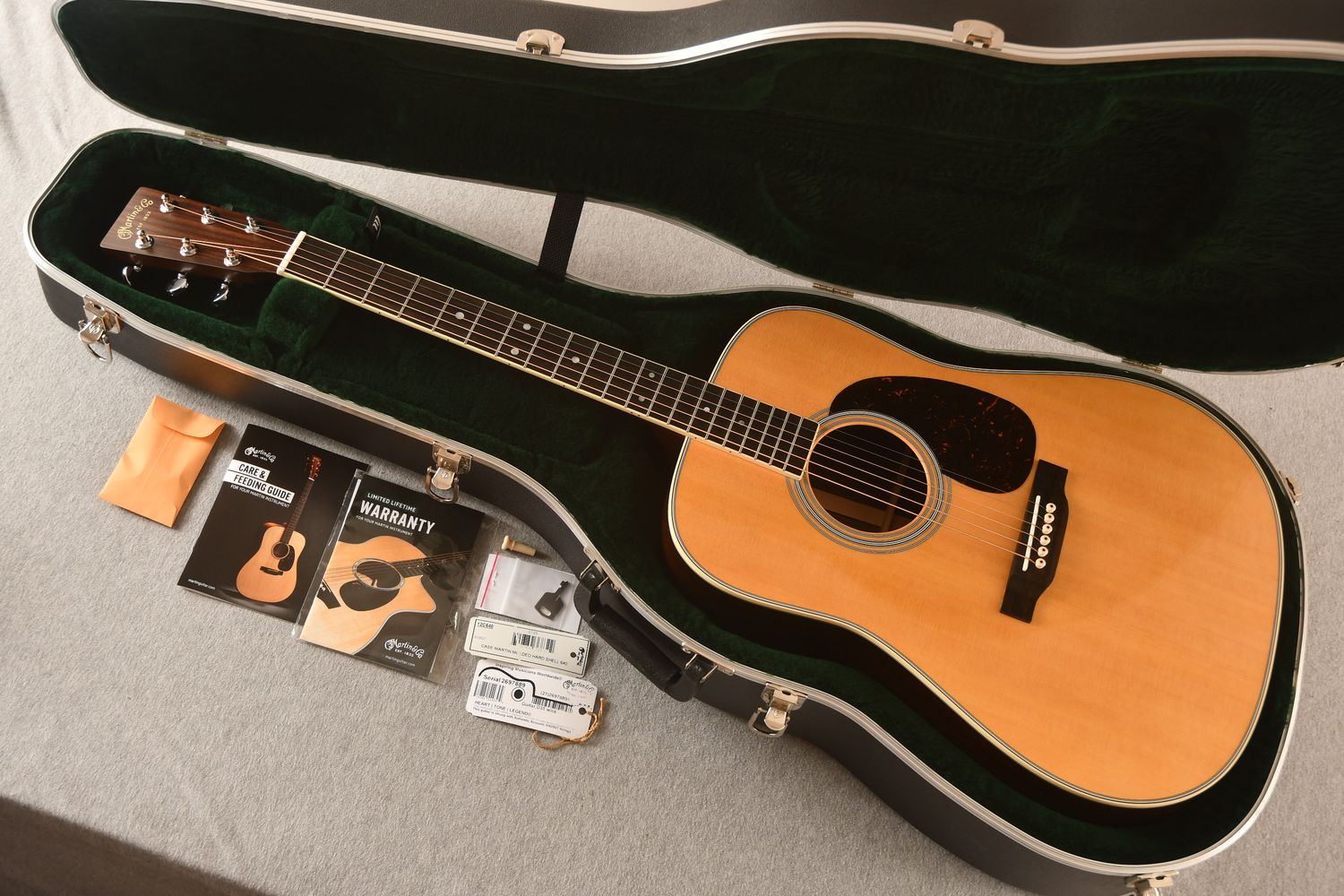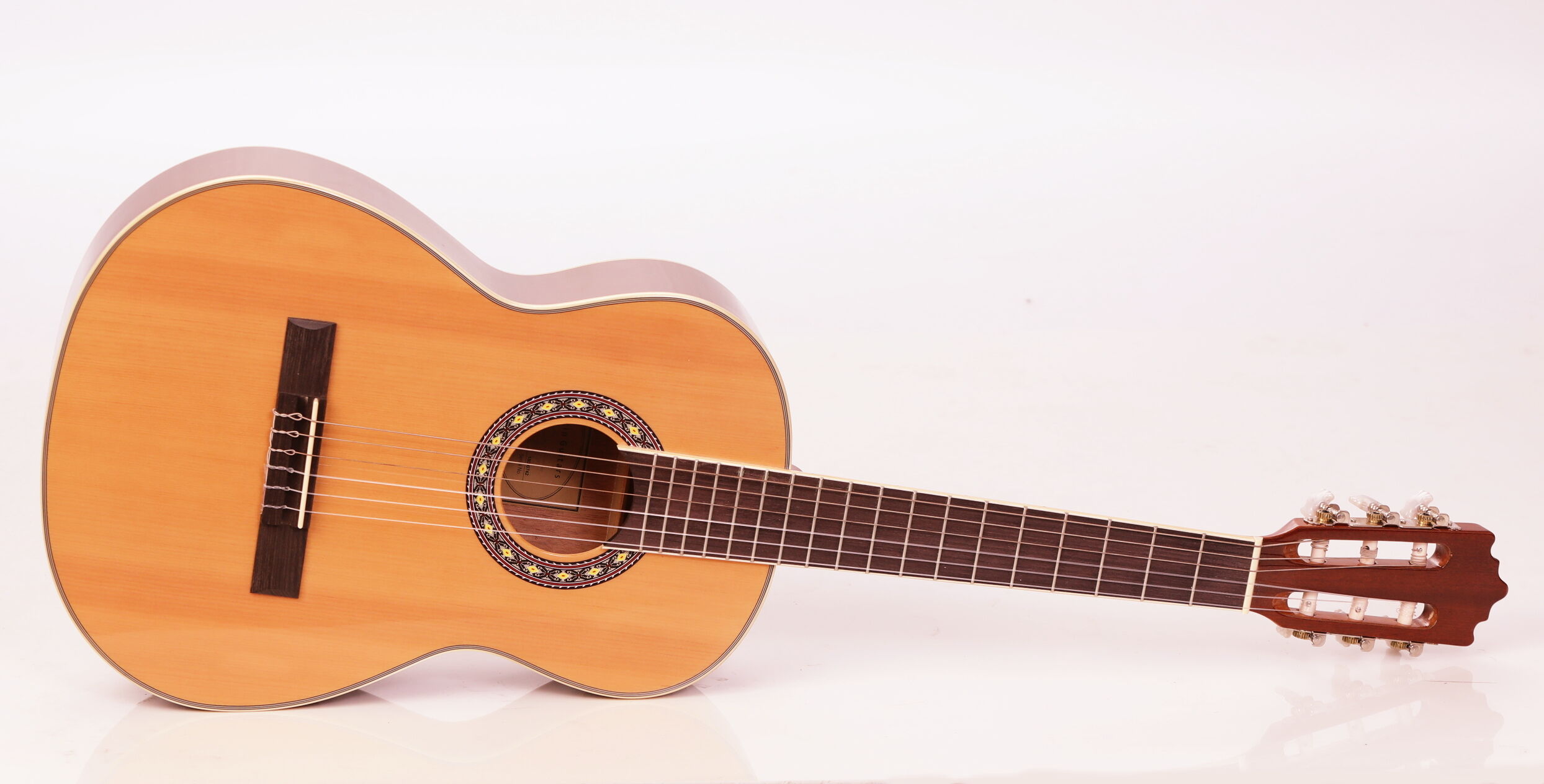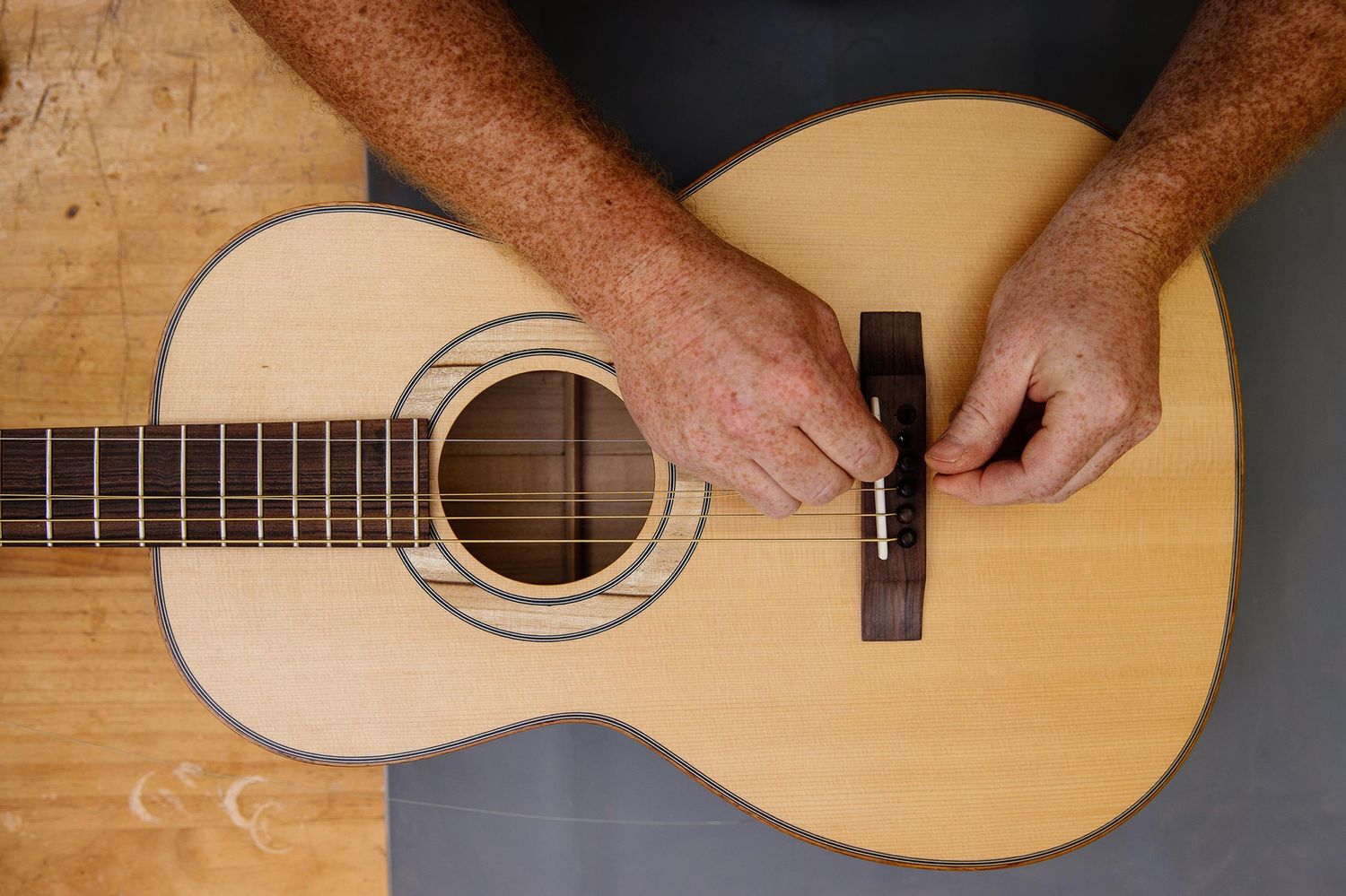Home>Production & Technology>Acoustic>What Is The Hole In An Acoustic Guitar Called


Acoustic
What Is The Hole In An Acoustic Guitar Called
Published: March 12, 2024
Discover the purpose and significance of the sound hole in an acoustic guitar. Learn about its impact on tone and resonance. Explore the anatomy of acoustic guitars.
(Many of the links in this article redirect to a specific reviewed product. Your purchase of these products through affiliate links helps to generate commission for AudioLover.com, at no extra cost. Learn more)
Introduction
When you pick up an acoustic guitar, your eyes are immediately drawn to its elegant curves, the polished wood, and the strings that seem to hum with potential. But there's another feature that's just as captivating, albeit less obvious at first glance: the soundhole. This seemingly simple aperture plays a crucial role in shaping the guitar's sound, and its design has evolved over centuries to become an integral part of the instrument's identity.
The soundhole, often located directly beneath the strings, is a circular or oval opening on the face of the guitar. It's not just a random void; rather, it serves a specific purpose that significantly impacts the guitar's acoustics. As we delve into the intricacies of this unassuming feature, we'll uncover the fascinating history and science behind the soundhole, shedding light on its evolution and the pivotal role it plays in producing the rich, resonant tones that define the acoustic guitar.
The soundhole is not merely a passive element; it's an active participant in the guitar's sonic performance. Its size, shape, and placement are carefully considered by luthiers and guitar makers to achieve the desired tonal characteristics. As we explore the purpose and evolution of the soundhole, we'll gain a deeper appreciation for this unassuming yet indispensable component of the acoustic guitar.
So, let's embark on a journey through the heart of the acoustic guitar, where the soundhole serves as a gateway to the instrument's soulful voice. As we unravel the mysteries and marvels of this unassuming aperture, we'll gain a newfound understanding of the acoustic guitar's inner workings and the pivotal role played by the humble soundhole.
Soundhole
The soundhole, an unassuming aperture located on the face of an acoustic guitar, is a defining feature that contributes significantly to the instrument's sonic character. Typically circular or oval in shape, the soundhole serves as a crucial element in the guitar's acoustic design. Positioned beneath the strings, it acts as a portal through which sound resonates, influencing the instrument's tonal qualities and projection.
Crafted with precision and purpose, the soundhole is not merely a passive opening; rather, it actively participates in shaping the guitar's sound. Its size, shape, and placement are meticulously considered during the instrument's construction, with luthiers and guitar makers employing their expertise to optimize the acoustic properties of the soundhole.
The design of the soundhole is not arbitrary; it is carefully tailored to enhance the guitar's resonance and tonal balance. By allowing the soundboard to flex and vibrate, the soundhole contributes to the projection of sound waves, enriching the instrument's overall sonic output. This interaction between the soundboard and the soundhole is fundamental to the guitar's ability to produce rich, full-bodied tones.
Moreover, the soundhole plays a crucial role in controlling the airflow within the guitar body, influencing the instrument's responsiveness and tonal dynamics. As the strings are plucked or strummed, the sound waves generated within the body of the guitar are channeled through the soundhole, contributing to the instrument's distinctive voice.
In addition to its acoustic function, the soundhole also serves as a visual focal point, adding to the aesthetic appeal of the guitar. Often adorned with intricate rosette designs, the soundhole contributes to the instrument's overall elegance and craftsmanship, further enhancing its allure.
In essence, the soundhole is not merely a hollow opening; it is a vital component that shapes the acoustic guitar's sonic identity. Its strategic placement and meticulous design exemplify the intricate craftsmanship and artistry that define the instrument. As we continue to explore the acoustic guitar's inner workings, it becomes evident that the unassuming soundhole is a cornerstone of its resonant, soul-stirring voice.
Purpose of the Soundhole
The soundhole, a seemingly modest feature on the face of an acoustic guitar, serves a multifaceted purpose that significantly influences the instrument's sonic characteristics. Its primary function is to facilitate the resonance and projection of sound produced by the vibrating strings and the guitar's soundboard. By allowing the sound waves to escape from the internal chamber of the guitar, the soundhole plays a pivotal role in shaping the instrument's tonal qualities and overall acoustic performance.
One of the key purposes of the soundhole is to enable the soundboard, also known as the guitar's top, to flex and vibrate in response to the strings' vibrations. This interaction between the strings, soundboard, and the air inside the guitar body is essential for producing the rich, full-bodied tones that are synonymous with the acoustic guitar. As the soundboard vibrates, it generates sound waves that are channeled through the soundhole, contributing to the instrument's resonance and projection.
In addition to its role in sound projection, the soundhole also influences the airflow within the guitar body. As the strings are played, the sound waves generated within the instrument need an outlet to escape, and the soundhole provides this crucial pathway. This controlled release of sound waves through the soundhole contributes to the guitar's responsiveness and tonal dynamics, allowing for the nuanced expression of musical phrases and melodies.
Furthermore, the size and shape of the soundhole directly impact the instrument's tonal balance and timbre. Luthiers and guitar makers carefully consider these factors during the instrument's construction to achieve the desired sonic characteristics. A larger soundhole, for instance, may enhance the guitar's bass response, while a smaller one might emphasize the midrange frequencies. This deliberate manipulation of the soundhole's dimensions allows for the fine-tuning of the instrument's tonal profile, catering to the preferences of different musicians and musical styles.
Beyond its acoustic functions, the soundhole also contributes to the visual appeal of the guitar. Often adorned with intricate rosette designs, the soundhole adds to the instrument's aesthetic charm, further enhancing its allure and craftsmanship.
In essence, the soundhole serves as a gateway for sound, shaping the acoustic guitar's voice and character. Its multifaceted purpose underscores its significance as a fundamental element in the instrument's design, contributing to both its sonic and visual appeal. As we continue to explore the acoustic guitar's inner workings, it becomes evident that the unassuming soundhole is a cornerstone of its resonant, soul-stirring voice.
Evolution of the Soundhole
The evolution of the soundhole spans centuries, reflecting the intersection of craftsmanship, acoustic science, and artistic expression. The earliest iterations of stringed instruments, from ancient lutes to early guitars, lacked a distinct soundhole as we recognize it today. Instead, these instruments relied on open, resonant bodies to project sound, with minimal structural elements influencing their acoustic properties.
As instrument-making techniques advanced and the quest for refined tonal qualities intensified, the concept of a deliberate soundhole began to emerge. Early iterations featured rudimentary openings, often positioned near the instrument's neck, allowing sound to escape from the body. Over time, artisans and luthiers recognized the potential for enhancing tonal projection and balance through the strategic placement and shaping of these apertures.
The Renaissance period marked a significant turning point in the evolution of the soundhole. Luthiers, particularly in Italy, began experimenting with various soundhole designs, exploring the impact of size, shape, and placement on the instrument's acoustics. This era witnessed the emergence of intricate rosette designs surrounding the soundhole, adding a touch of artistry to the functional element.
As the Baroque and Classical periods unfolded, the soundhole's evolution continued, with luthiers refining their understanding of acoustic principles and the interplay between the soundboard, body, and soundhole. The development of the modern classical guitar during this time further propelled the refinement of soundhole design, as artisans sought to achieve optimal tonal balance and projection for the burgeoning repertoire of solo and ensemble music.
The 19th and 20th centuries witnessed a convergence of tradition and innovation in soundhole design. With the rise of steel-string guitars and the expansion of musical genres, luthiers and guitar makers explored diverse soundhole shapes, sizes, and decorative elements to cater to evolving musical preferences. This period also saw the emergence of alternative soundhole placements, such as the offset or "off-center" soundhole, offering new possibilities for tonal expression and visual aesthetics.
In contemporary times, the evolution of the soundhole continues, fueled by advancements in acoustic research, material science, and the quest for sonic excellence. Modern luthiers leverage cutting-edge technologies and innovative materials to push the boundaries of soundhole design, seeking to unlock new dimensions of tonal richness, responsiveness, and projection.
The evolution of the soundhole stands as a testament to the enduring pursuit of sonic perfection and the harmonious fusion of art and science in the realm of instrument making. From humble beginnings to the forefront of acoustic innovation, the soundhole's journey mirrors the evolution of the acoustic guitar itself, embodying centuries of craftsmanship, creativity, and unwavering dedication to the pursuit of musical expression.
Conclusion
In conclusion, the soundhole stands as a testament to the harmonious fusion of art, science, and craftsmanship in the realm of acoustic guitar making. This unassuming aperture, strategically positioned on the instrument's face, plays a multifaceted role in shaping the guitar's sonic identity. From facilitating sound projection and resonance to influencing tonal balance and timbre, the soundhole serves as a vital conduit for the instrument's soul-stirring voice.
As we traced the evolution of the soundhole, spanning centuries of instrument-making history, we witnessed the relentless pursuit of sonic perfection and tonal refinement. From its humble origins in ancient stringed instruments to the intricate designs adorning modern guitars, the soundhole has evolved in tandem with the artistry and innovation of luthiers and guitar makers. Each era contributed to the soundhole's evolution, refining its design and enhancing its acoustic impact, ultimately shaping the acoustic guitar's rich and diverse sonic palette.
Furthermore, the soundhole embodies the delicate balance between tradition and innovation. While rooted in centuries-old principles of acoustic science, the contemporary soundhole reflects the cutting-edge advancements in material science, acoustic research, and technological innovation. This convergence of tradition and innovation underscores the enduring relevance of the soundhole as a cornerstone of acoustic guitar design, perpetuating its legacy across generations of musicians and instrument makers.
Beyond its acoustic function, the soundhole serves as a visual focal point, adding to the instrument's aesthetic allure and craftsmanship. Adorned with intricate rosette designs, the soundhole exemplifies the meticulous attention to detail and artistic expression inherent in acoustic guitar making. Its presence not only enhances the instrument's visual appeal but also symbolizes the seamless integration of form and function, where beauty and utility converge in perfect harmony.
In essence, the soundhole transcends its physical dimensions, embodying the spirit of musical expression and the enduring legacy of the acoustic guitar. Its evolution mirrors the evolution of music itself, reflecting the ever-changing landscape of artistic expression and the unwavering dedication to sonic excellence. As we continue to cherish the timeless resonance of the acoustic guitar, let us recognize the humble soundhole as a silent yet profound guardian of its soulful voice, resonating through the annals of musical history.











